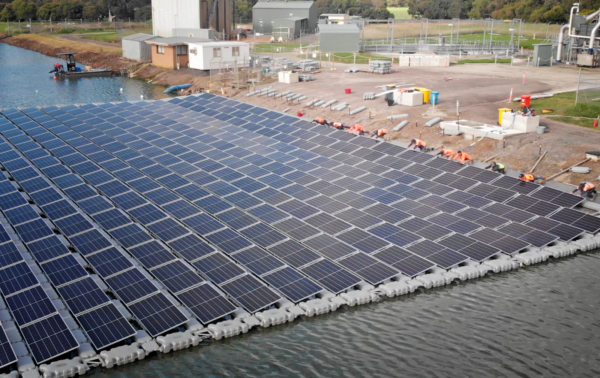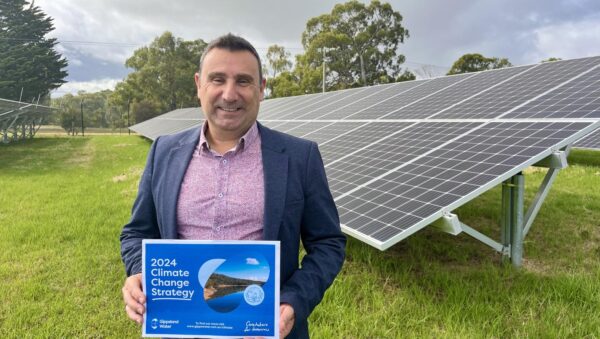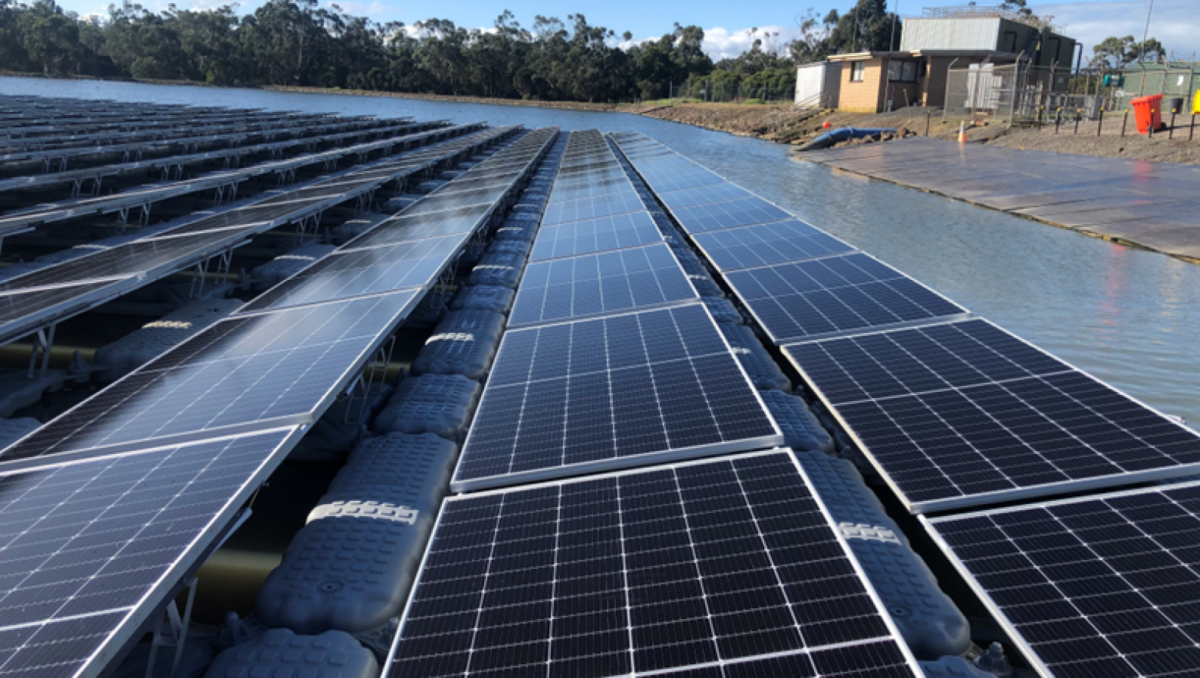Victorian regional water utility Gippsland Water has officially launched a 350 kW solar system that floats on one of the lagoons at the Drouin wastewater treatment plant, about 100 kilometres east of state capital Melbourne.
Designed, engineered and installed by Melbourne-headquartered solar company Greenwood Solutions, the system features 644 individual solar panels mounted on floating pontoons. A custom-designed inverter station was also crafted for the system.
Recognised by the Clean Energy Council (CEC) in its 2023 solar design and installation awards, the system is anchored to up to five-tonne concrete ballast blocks that will allow for future adjustments.
Gippsland Water Acting Managing Director Simon Aquilina said the floating PV array will help power the Drouin treatment plant’s substantial electrical loads and is part of the organisation’s commitment to renewable energy targets.
“These solar panels will help us reach our renewable energy target of 100% by 2025 and contribute to achieving our target of net-zero greenhouse emissions by 2030,” he said.
“At peak capacity, the solar array can fully power the treatment plant, producing enough kilowatts to power nearly 90 homes per day.”
Aquilina said the close proximity of the solar panels to the water’s surface also positively impact the wastewater treatment process by reducing evaporation rates.
The panels’ proximity to the water also enhances solar generation due to increased cooling and reflection, further amplifying the system’s efficiency.

Image: Greenwood Solutions
The floating solar system is one of several renewable energy projects Gippsland Water is pursuing on the path to net-zero, including a 1.2 MW solar system that was switched on early last year at the Gippsland Water Factory in Maryvale.
“A significant amount of our power already comes from renewables and we are continuing to invest in new energy sources,” Aquilina said.
“We have nearly 6,000 solar panels running across eight of our sites as well as biogas and hydroelectric generators. Between 2017 and 2022 we almost doubled our renewable energy production, and now we produce 5,451 MW in renewable energy each year.”

Image: Gippsland Water
Gippsland Water said the floating solar array at the Drouin treatment plant is the largest in Australia where the technology is yet to be widely adopted, as opposed to the global uptake where some projects extend into the gigawatt-scale.
There are signs that the technology is gaining traction in Australia with Victorian government-owned water authority Wannon Water having announced plans to install a 500 kW system atop the Brierly Basin Reservoir at Warrnambool in the state’s southwest
The Victorian government is also investing in more floating solar projects, committing more than $200,000 in funding to install a floating system on a dam at Lardner Park in the Gippsland region.
Operational systems in Australia include a 100 kW floating solar array installed at the East Lismore Sewage Treatment Plant in northern New South Wales and a 157 kW array at the Jamestown wastewater facility in South Australia.
This content is protected by copyright and may not be reused. If you want to cooperate with us and would like to reuse some of our content, please contact: editors@pv-magazine.com.









2 comments
By submitting this form you agree to pv magazine using your data for the purposes of publishing your comment.
Your personal data will only be disclosed or otherwise transmitted to third parties for the purposes of spam filtering or if this is necessary for technical maintenance of the website. Any other transfer to third parties will not take place unless this is justified on the basis of applicable data protection regulations or if pv magazine is legally obliged to do so.
You may revoke this consent at any time with effect for the future, in which case your personal data will be deleted immediately. Otherwise, your data will be deleted if pv magazine has processed your request or the purpose of data storage is fulfilled.
Further information on data privacy can be found in our Data Protection Policy.